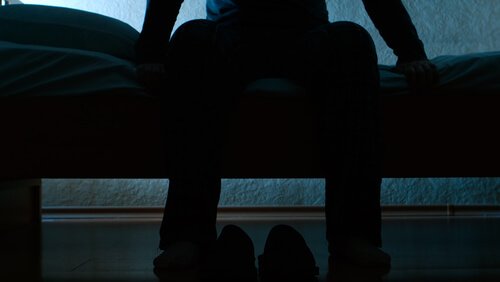Restless Legs Syndrome and the Motor Cortex

Restless legs syndrome (RLS) is hard to describe. In fact, some people believe that their legs move on their own. However, what actually happens is that they have a constant need to move their lower limbs to make the unpleasant sensation stop. Some people state that they feel tingling up and down their legs. Discover this syndrome’s main characteristics and how it relates to the motor cortex in this article!

It’s half past midnight. I’m trying to sleep but it’s impossible. When I’m about to fall asleep, a tingling sensation manifests in my legs. I need to move them, so I raise one leg and shake it in the air. I raise the other one and repeat.
The tingling starts again a few minutes later. I get up and walk back and forth in my room, I massage my legs and even hit them a bit. The tingling has decreased. I’ve managed to mitigate the restless legs syndrome symptoms enough to fall back asleep.
What is restless legs syndrome?
According to the National Institute of Neurological Disorders and Stroke (NINDS), restless legs syndrome is a sensory-motor disorder that has five main diagnostic criteria:
- A strong and often overwhelming need or urge to move the legs that is often associated with abnormal, unpleasant, or uncomfortable sensations.
- The urge to move the legs starts or get worse during rest or inactivity.
- The urge to move the legs is at least temporarily and partially or totally relieved by movements.
- The urge to move the legs starts or is aggravated in the evening or night.
- The above four features are not due to any other medical or behavioral condition.
RLS and the motor cortex
Some of the main causes of this condition are iron deficiency and tricyclic antidepressants intake, as well as selective serotonin reuptake inhibitors, lithium, and caffeine. However, new discoveries relate restless legs syndrome to an abnormal motor cortex functioning.
Johns Hopkins University researchers discovered a possible cause for this syndrome: motor cortex hyperactivity.
Rachel Salas of John Hopkins University assures that “the region of the brain that controls the legs shows increased cortical excitability in the motor cortex.”

Treatment
Pharmacological treatment
- Dopamine agonists such as ropinirole, pergolide, or pramipexole.
- Benzodiazepines help mitigate the tingling sensation and make it easier to fall asleep.
- Anticonvulsants, especially gabapentin and carbamazepine.
- Opioids can also be used due to their analgesic effect.
Non-pharmacological treatment
- Having a sleep routine and going to bed at the same time every day.
- Reducing or suppressing caffeine, alcohol, and nicotine consumption.
- Frequent exercise.
Conclusion
There’s yet a lot to discover about restless legs syndrome (RLS) to improve patients’ quality of life.
Reducing the symptoms associated with this syndrome will translate into better sleep hygiene and quality sleep. It would eradicate sleepiness, tiredness, fatigue, and mood swings.
This text is provided for informational purposes only and does not replace consultation with a professional. If in doubt, consult your specialist.








